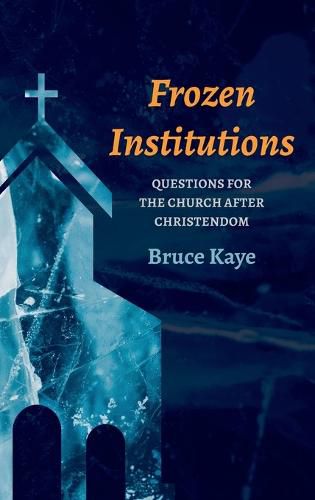Readings Newsletter
Become a Readings Member to make your shopping experience even easier.
Sign in or sign up for free!
You’re not far away from qualifying for FREE standard shipping within Australia
You’ve qualified for FREE standard shipping within Australia
The cart is loading…






This title is printed to order. This book may have been self-published. If so, we cannot guarantee the quality of the content. In the main most books will have gone through the editing process however some may not. We therefore suggest that you be aware of this before ordering this book. If in doubt check either the author or publisher’s details as we are unable to accept any returns unless they are faulty. Please contact us if you have any questions.
Thanks for the memories–well, maybe not. It has been hard work getting over the break up of the fifteen-hundred-year Anglican marriage of church and state–the so-called English Christendom. It is still a work in progress because the marriage left behind so many unconscious assumptions about power, institutions, and community relations. The first group of essays in this book challenges some of the frozen elements in church institutions, in particular habits of orthodoxy, catholicity, and canonical Scripture. They are framed in the context of the struggles of the Anglican Communion. The second set of essays refer to the Anglican Church of Australia and some attempts at de-frosting its institutions. These are lectures and papers given across Australia mostly during the author’s time as General Secretary of the Anglican Church of Australia. The last essay is an account of a current struggle over the blessing of a same-sex couple legally married under recently changed civil law. It illustrates the role of the constitution of the church in this dispute. The loose federation of dioceses in the constitution has generally enabled dioceses to live separately. The danger in this has been the specter of a church made up of diocesan silos rather than of engaged fellowship. However, the federal structure does not need to work that way. Indeed, in the present conflict situation this very looseness could be used to provide space for more respectful engagement. How this crisis is handled will be an early clue as to whether the church is up to it.
$9.00 standard shipping within Australia
FREE standard shipping within Australia for orders over $100.00
Express & International shipping calculated at checkout
This title is printed to order. This book may have been self-published. If so, we cannot guarantee the quality of the content. In the main most books will have gone through the editing process however some may not. We therefore suggest that you be aware of this before ordering this book. If in doubt check either the author or publisher’s details as we are unable to accept any returns unless they are faulty. Please contact us if you have any questions.
Thanks for the memories–well, maybe not. It has been hard work getting over the break up of the fifteen-hundred-year Anglican marriage of church and state–the so-called English Christendom. It is still a work in progress because the marriage left behind so many unconscious assumptions about power, institutions, and community relations. The first group of essays in this book challenges some of the frozen elements in church institutions, in particular habits of orthodoxy, catholicity, and canonical Scripture. They are framed in the context of the struggles of the Anglican Communion. The second set of essays refer to the Anglican Church of Australia and some attempts at de-frosting its institutions. These are lectures and papers given across Australia mostly during the author’s time as General Secretary of the Anglican Church of Australia. The last essay is an account of a current struggle over the blessing of a same-sex couple legally married under recently changed civil law. It illustrates the role of the constitution of the church in this dispute. The loose federation of dioceses in the constitution has generally enabled dioceses to live separately. The danger in this has been the specter of a church made up of diocesan silos rather than of engaged fellowship. However, the federal structure does not need to work that way. Indeed, in the present conflict situation this very looseness could be used to provide space for more respectful engagement. How this crisis is handled will be an early clue as to whether the church is up to it.